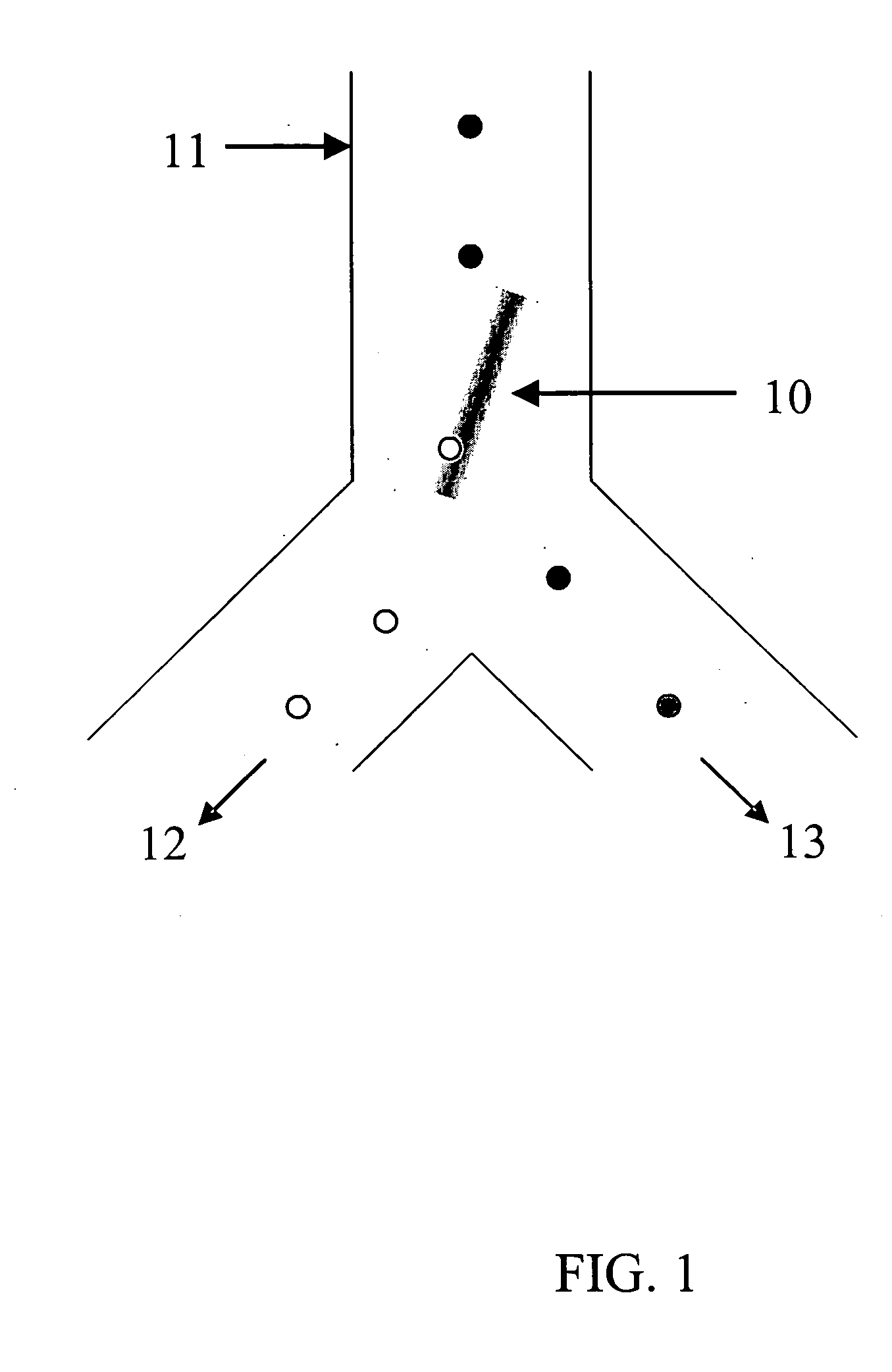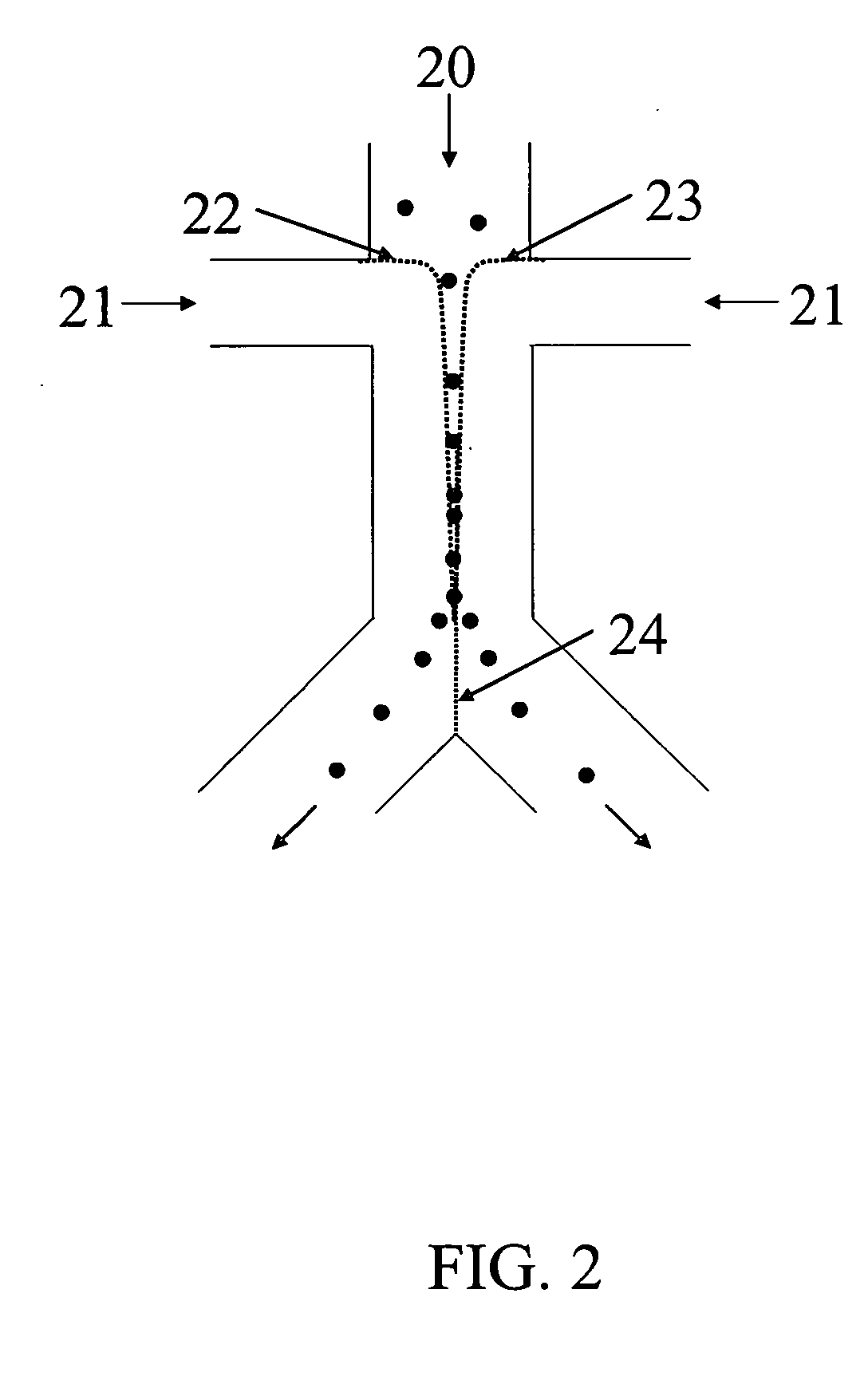Methods and apparatus for sorting cells using an optical switch in a microfluidic channel network
a microfluidic channel and optical switch technology, applied in fluorescence/phosphorescence laboratories, instruments, glassware, etc., can solve the problems of inability to sterilize, and inability to perform sorting. , to achieve the effect of improving the ability to sor
- Summary
- Abstract
- Description
- Claims
- Application Information
AI Technical Summary
Benefits of technology
Problems solved by technology
Method used
Image
Examples
Embodiment Construction
[0033]FIG. 1 shows one embodiment of an optical switch 10 that serves to sort cells in a 1×2 microfluidic channel network, i.e. a network with one main input channel 11 and two output channels 12 and 13 extending from a bifurcation junction. A “Y” geometry for the bifurcation junction is shown in FIG. 1, but other bifurcations such as a “T” geometry may also be used. In general these microfluidic channels are produced in optically transparent substrates to enable projection of the optical switch and other cell detection optics into the channel. This substrate is typically, but not limited to, glass, quartz, plastics, e.g., polymethylmethacrylate (PMMA), etc., and other castable or workable polymers (e.g. polydimethylsiloxane, PDMS or SU8). The depth of the microfluidic channels is typically in, but not limited to, the range 10 μm to 100 μm. The width of the microfluidic channels is typically, but not limited to, 1 to 5 times the depth. The cross section is typically rectangular, or ...
PUM
 Login to View More
Login to View More Abstract
Description
Claims
Application Information
 Login to View More
Login to View More - R&D
- Intellectual Property
- Life Sciences
- Materials
- Tech Scout
- Unparalleled Data Quality
- Higher Quality Content
- 60% Fewer Hallucinations
Browse by: Latest US Patents, China's latest patents, Technical Efficacy Thesaurus, Application Domain, Technology Topic, Popular Technical Reports.
© 2025 PatSnap. All rights reserved.Legal|Privacy policy|Modern Slavery Act Transparency Statement|Sitemap|About US| Contact US: help@patsnap.com



